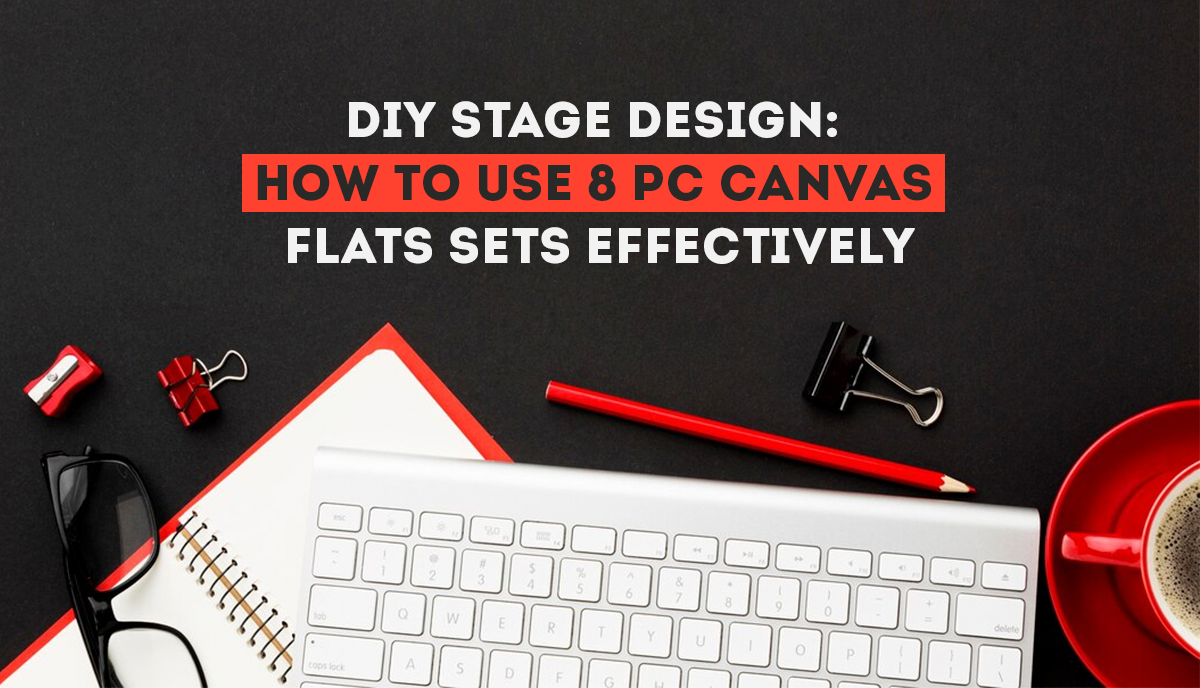Summary!
In Summary! If you want to design a DIY stage design, you should start by putting down your ideas on paper. You are supposed to consider the theme or mood of what you want it to be like on the stage. Keep in mind that it’s important to make sure that your stage appears in size as well as the view from the spectator’s side. And finally, collect fabrics, paint colors, and lighting fixtures among others that correspond to your perception. For florists who wish to use 8-piece canvas flats set more effectively, the choice of various compositions can be employed in the creation of different stage backgrounds.
How to use 8 pc canvas flats practically?
How to use 8 pc canvas flats? They are a kind of shoes, and here are some styling techniques and usages:
Casual wear: Team them up with jeans, shorts, or a skirt to get the relaxed everyday look.
Dress up: Wear them with a dress, a skirt, or dress pants at your workplace or another formal event.
Comfortable travel: Take them along when you travel because they are not only comfortable but also versatile.
Exercise: Sport them around as a comfortable shoe for yoga, Pilates, or other low-impact exercises.
Mix and match: Try out different combinations of clothes and accessories to create several different outfits.
So, if you are questioning, How to use 8 pc canvas flats? Then above are the answers to your questions and the key to styling the 8 Pc Canvas Flats Set would be prioritizing comfort and versatility while having fun with the wardrobe choices you make.
How to DIY stage design with canvas flats?
Here are some ideas including in DIY stage design with canvas flats:
Backdrop: Stretch canvas flats across a frame or attach to a wall to create unique backdrops.
Set pieces: Use canvas flats to make set pieces like walls, doors, or windows.
Soft goods: Use canvas flats to obtain soft goods such as curtains, drapes, or cycloramas.
Projection screen: Stretch canvas flats over a frame to create a projection screen.
Drops: Canvas flats as drops to create a sense of depth or hide backstage areas.
These are some Canvas flats stage setup and Effective stage design techniques with canvas flats.
DIY stage set design tips for an event
The following are some DIY stage set design tips:
Keep it simple: Avoid designs that are too complicated and, therefore, difficult to execute.
Flexible materials: Make use of materials such as canvas, fabric, or cardboard, which can be worked upon easily.
Readymades: Items already available to you, like crates, boxes, tables, and chairs, are devices that save you much time and many resources in design.
Light: Be sensitive to light and how it is going to interact or contrast with your design; use it to maximum effect by manipulating the visuals.
Depth: Create layers through texture and color for added depth and interest.
Be flexible: Be prepared to make adjustments as needed during setup.
Unifying elements: Unify the design by using a constant theme or color.
Safety first: Ensure that a set is stable and secure for performers and audience members alike.
Interesting storage: Apply secret compartments or multi-functional pieces to ensure maximum storage.
These are some Effective use of canvas flats in stage design.
Some standard elements used in 8-piece canvas flats stage design include :
- Fabric draping
- Construction of structure from cardboard packets
- Painted backdrop
- Up-cycled furniture
- Lighting Installations
- Projection-Mapping
- Geometric shapes and pattern
Simple Stage design ideas with canvas flats
The following are some of the stage design ideas with canvas flats:
Canvas Wings: The Effective use of canvas flats in stage design is to create wings that can be used to hide backstage areas or create a sense of width.
Step and Repeat: Create a step and repeat background with canvas flats, having the logo or design printed on them.
Canvas Drops: These flats can be used to create a sense of depth or hide the stage in the back areas.
Theateric Cyclorama: It is a curved backdrop made of canvas flats that can be used to create a seamless horizon.
Arching with Canvas: An arch shape of canvas flats can make the stage more interesting and full of depth.
Canvas Ceiling: Canvas flats could be used to create a ceiling or, for that matter, even a canopy over the acting space to add one more deep layer and visual aesthetic to the performance space.
These are just a few ideas for Designing stages with 8 pc canvas flats to get you started. Canvas flats open up many creative ways to enhance your stage design.
Canvas flats set usage guide, structure, tips and tricks:
Here are some Canvas flats set usage guide:
- Number and size of canvas flats needed
- Weight and type of canvas
- Frame or structure on which to stretch canvas
- Design the layout of the set
Structure:
- Erect the frame or structure according to the manufacturer’s recommendations.
- The canvas should be stretched tight over to prevent any kind of wrinkles or sags in it.
- Adhere the canvas onto the floor or the stage to ensure it doesn’t move around.
Tips and Tricks
- Use a strong frame to support the weight on the canvas.
- The canvas material should be easy to clean and durable.
- Get blackout liners to fix the light for added contrast.
- Clamp or weigh it on the floor or stage to avoid fluttering.
- Using a level, ensure that it is plumb and level.
Following these guidelines, you can work with the canvas flat and come up with a versatile and dynamic stage design that will complement your performance or event. Palco specialties are experts in event production and know how to design a stage. They are always ready to assist you with your difficulties.
Affordable Canvas flats for stage design
Canvas flats are versatile, durable, and user-friendly; hence, some of the most-liked stage designs. These can be used to create a wide variety of settings and designs. Some DIY stage props using canvas flats are here:
Versatility: This can be used to construct a huge variety of settings and designs.
Durability: Withstands repeated usage and handling.
Ease of use: Setup and striking are done easily.
Lightweight: Light in weight; therefore, it can be easily moved and stored.
Affordable: Compared to other materials in stage design, the cost is considered low.
How to build 8 pc canvas flats for theater?
Use the 8 pc canvas flats for theater to animate a great all-around set design for you. Here is how you might put them to work. DIY theater set design with canvas flats are available here:
- 8 individual canvas flats, generally 4′ x 8′ or 6′ x 8′ in proportions.
- Can help to suggest a host of settings that include walls, doors, windows, backdrops, set pieces, etc.
- Configured differently because it can make numerous scene settings.
- Can form blackout or masking systems.
- Can form a cyclorama or an infinity wall.
- Used as a projection screen or surface.
Tips for Choosing Canvas Flats for UIL and TAPPS Competition are portability, versatility, durability, storage, adjustability, budget, customization, and usability.
How to get Creative stage design with canvas flats?
Here are some creative stage design with canvas flats:
Layered Backdrop: Hang multiple canvas flats with different colors or patterns to create a layered backdrop.
Geometric Shapes: Use canvas flats to create random shapes like triangles, squares, or circles for a view.
Abstract Design: Either paint or print various patterns or designs on these canvas flats to get an abstract design.
Nature Scene: Create a nature scene with canvas flats featuring trees, mountains, or an ocean element.
Abstract Wings: Can make abstractions out of the wing pieces using the canvas flats just for perceiving height and a textural feel on the stage.
Projection-Mapping: Canvas Flat can be used for projection mapping but using it as a surface.
Modular Set: A modular set that can easily be interchanged for the different settings.

